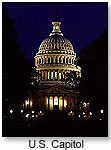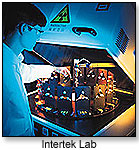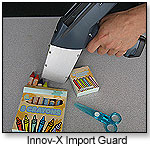 |

Tools:








How to Prepare for Stricter Safety LegislationEstablish Protocols, Terms and Relationships Now
| “ ... prudent toy and children's product companies should immediately evaluate feasible steps to comply with impending, more stringent national rules.” |
 In January, U.S. Consumer Product Safety Commission Chairwoman Nancy Nord scolded the toy industry for widespread failure to comply with safety laws, particularly violations of the 600 parts-per-million (ppm) federal limit on lead in surface paints and coatings. A month earlier, the House of Representatives unanimously voted to enact federal legislation amending the Consumer Product Safety Act, which would lower the lead standard to 90 ppm and impose a new national lead standard on accessible components of consumer products for children 12 and younger. In January, U.S. Consumer Product Safety Commission Chairwoman Nancy Nord scolded the toy industry for widespread failure to comply with safety laws, particularly violations of the 600 parts-per-million (ppm) federal limit on lead in surface paints and coatings. A month earlier, the House of Representatives unanimously voted to enact federal legislation amending the Consumer Product Safety Act, which would lower the lead standard to 90 ppm and impose a new national lead standard on accessible components of consumer products for children 12 and younger.
In March, the Senate passed its own bill that mirrors the House bill in regard to lead limits on children's products. Yet, it incorporates several controversial elements, such as authorizing enforcement of the new federal law through states' attorneys general and — modeled after a new California law — banning as a hazardous substance any children's toy or childcare article containing phthalates in concentrations above 0.1 percent.
TAKE THESE STEPS
Though the impending general election may delay enactment until next year, the strength of bipartisan support for stronger legislation makes it unlikely that a new president would consider a veto.
Thus, prudent toy and children's product companies should immediately evaluate feasible steps to comply with impending, more stringent national rules. Additionally, any company selling products nationally should comply with California's Proposition 65, which prohibits exposure to lead and hundreds of other toxic chemicals without a conspicuous display of a warning.
In consultation with environmental professionals and legal counsel, companies should focus on, at minimum, these three action areas:
 1. Implement More Frequent and Thorough Product Testing 1. Implement More Frequent and Thorough Product Testing
Many companies historically have had no idea whether the products they produce and/or sell contain lead or other toxic constituents, and if so, in which components and in what amounts. Given that dozens of recalls occur each year based on violations of the current 600 ppm lead standard, without the implementation of regularized testing protocols to ensure compliance, a greater number of companies will likely fail to meet the much lower 90 ppm standard.
No one-size-fits-all product testing system exists. However, the following issues deserve consideration:
• Mandatory Third-Party Testing: Both the House and Senate bills include a requirement that every manufacturer of a children's product must have its products tested by a third-party laboratory qualified to perform such tests or testing programs, and issue certification that the product meets the specified standard. Given the likely increased demand on third-party laboratories resulting from the new law, companies should establish relationships now.
 • In-House Testing Equipment: Larger companies with diverse product lines may also want to purchase a mobile testing unit to screen for compliance issues. While typically a low-to-mid five-figure investment, regular use of in-house screening may help avoid expensive legal actions brought under federal or state law. • In-House Testing Equipment: Larger companies with diverse product lines may also want to purchase a mobile testing unit to screen for compliance issues. While typically a low-to-mid five-figure investment, regular use of in-house screening may help avoid expensive legal actions brought under federal or state law.
• Testing Under the Direction of Counsel: To the extent possible, both third-party and in-house product testing should be performed under the direction of counsel, to ensure attorney-client privilege and confidentiality.
• California's Proposition 65: To have liability under Proposition 65, the exposure of consumers to lead and other toxic substances must be "knowing and intentional." Laboratory reports showing that a product has little or no lead can be useful in establishing this defense.
2. Reformulate and Phase-out Non-Conforming Products
Many companies caught in the snare of Proposition 65 have been forced to reformulate products to contain little or no lead. Several have begun to review the environmental risk profile of their other products to avoid further liability.
Products that cannot be reformulated should be targeted for phase-out prior to implementation of the new national standard. Companies that do not possess the in-house expertise to perform such an evaluation should consider retaining a qualified consultant with experience in providing environmental product audits.
3. Develop Better Contractual Protections
Companies should discuss with legal counsel improvements to existing agreements and relationships with suppliers and customers. For example, larger retailers have begun requiring vendors to sign uniform terms and conditions agreements that include expanded compliance with law and indemnification provisions. Smaller retailers, as well as product distributors, should also consider imposing such terms on their vendors and suppliers.
Essentially, the vendor must agree, as a condition to the continuation of sales, that its products comply with all applicable laws and regulations, including, but not limited to, federal consumer product safety standards for lead (and other toxic substances) and California's Proposition 65. The vendor also agrees to indemnify, defend and hold harmless its customer in terms of any liability and costs incurred relating to claims of non-compliance, including reimbursing its customer for legal fees (including outside counsel) and expenses incurred.
Implementing these and other prudent steps may be the difference between sinking and swimming in the more challenging regulatory waters ahead.
 Writer's Bio: Writer's Bio: Timothy Martin is an environmental attorney with Jeffer, Mangels, Butler & Marmaro LLP. He can be reached at 310.712.6824 or tmartin@jmbm.com. Read more articles by this author
THIS BANNER IS AN AD:

• • • • • • • • • • • • • • • • • • • • • • | • • • • • • • • • • • • • • • • • • • • • |
Back to TDmonthly's front page
|  |
Advertise on TDmonthly

|

